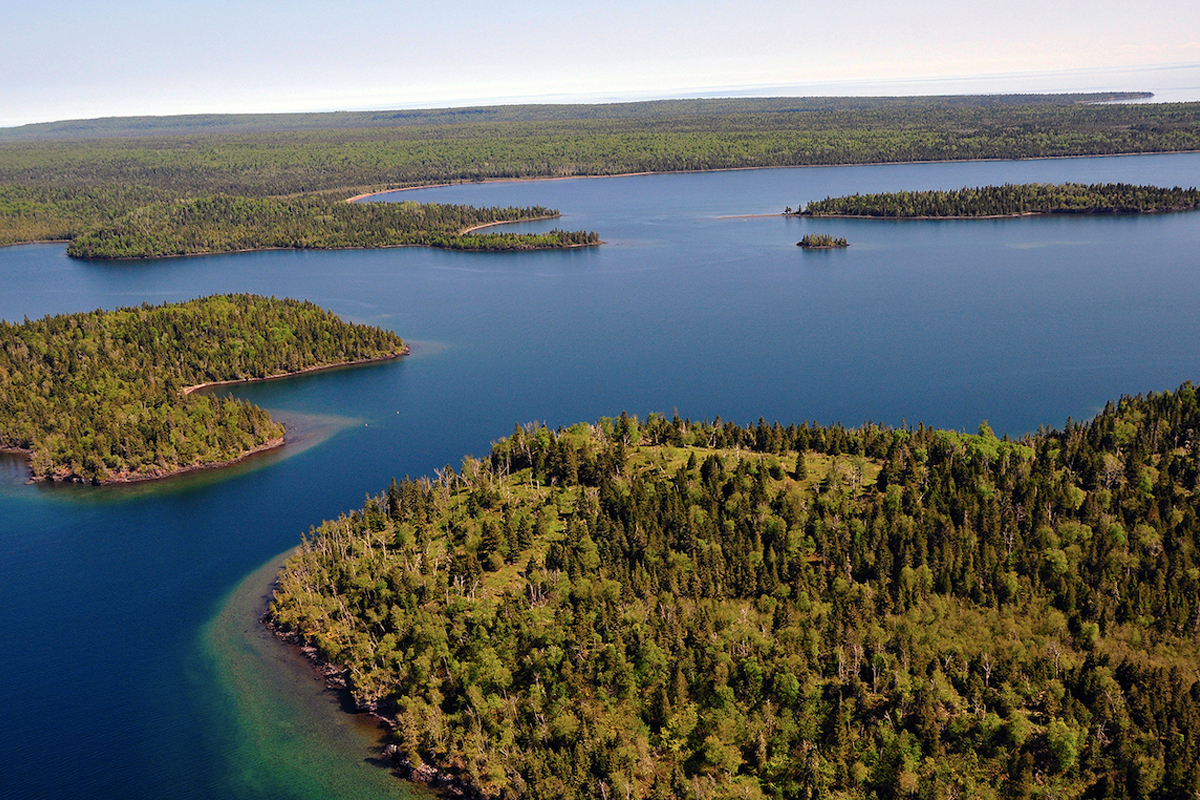Protect Isle Royale’s solitude and wild character
The National Park Service has issued a Draft Environmental Impact Statement for a Wilderness Stewardship Plan at Isle Royale Wilderness and National Park. The agency is considering a broad range of actions for managing Wilderness and cultural resources within Wilderness inside the park boundary, as well as issues and potential impacts associated with wilderness management. In addition, this plan will determine future use of historic structures in potential and designated Wilderness.
Located in the northern part of Lake Superior in the State of Michigan, Isle Royale National Park encompasses 133,788 acres of land and 438,008 acres of surface water (571,796 total acres). The park is the largest island in Lake Superior, which is itself the largest freshwater lake by surface area in the world. There are over 400 smaller islands surrounding the main island, which together constitute the full archipelago of Isle Royale.
Approximately 98 percent of the land portion of the park was designated by Congress as Wilderness in 1976. Later additions of land for wilderness designation brought the total wilderness acreage to 99 percent, encompassing 132,018 acres. There remain an additional 93 acres of the island that Congress identified as Potential Wilderness Additions (PWAs), areas that the Park Service can convert to designated Wilderness once the non-conforming uses (including structures) have ended. In addition to the Wilderness and Potential Wilderness on Isle Royale, 1,677 acres of the island are considered non-wilderness, including such places as Rock Harbor, Washington Island, the Visitor Centers, and the Park Service’s administrative Mott Headquarters.
For many years, the future of historic buildings and structures on Isle Royale has been a controversial issue. All of Isle Royale is publicly owned since it became a National Park in 1940, but some families have retained life estates or other continued access to their historic cabins they sold to the federal government. How to interpret the history of the commercial fishing operations, lodges, and family cabins continues to be debated, to say nothing about the long and rich history of the Anishinaabe (Ojibwe) people who pre-dated white European arrivals and their buildings.
The Draft Plan proposes “molder” or “removal” for only about 25 of the 100 structures in Wilderness or Potential Wilderness Additions (PWAs), while allowing for active maintenance or restoration for many others. This is in direct contradiction to the Wilderness Act’s directive that Wildernesses be free of structures, unless those structures are necessary for wilderness protection. The “resource” of national historic significance on Isle Royale is its Wilderness, and that’s what the Park Service must strive to perpetuate!
Yet, there is a loud constituency promoting the perpetuation of cabins, lodges, and other structures at the expense of Wilderness. We believe efforts to display the Euro-settlement history of the Island and its remaining structures should focus on the non-wilderness lands in the Park, while the Wilderness is administered as Wilderness. Wilderness Watch made the following points in our comments:
- In general, we support Alternative C, which best protects Isle Royale’s solitude and wilderness character.
- Structures in the designated Wilderness portions of Isle Royale should not be maintained or stabilized. Those the Park Service wishes to maintain should be relocated to areas outside of Wilderness where they may be better curated, preserved, and made accessible to the general public. Such actions align with the directives of the 1964 Wilderness Act.
- While we support the conversion of as much of the 93 acres of PWAs to Wilderness, the National Park Service should not reclassify any of the PWAs as designated Wilderness if it plans to maintain any structures on them that are not necessary for the administration of the Wilderness.
- Commercial uses should be eliminated from the Isle Royale Wilderness.
- Visitor use in Wilderness should be managed in ways that protects solitude and wilderness character. Alternative C is the best option for limiting large groups and crowding.
- The Park should remain closed to winter use to allow wildlife a respite from the relatively heavy human presence during spring, summer, and fall.
- Read our comments on Isle Royale Draft EIS and Wilderness Stewardship Plan (2023)
Contact Us
Wilderness Watch
P.O. Box 9175
Missoula, MT 59807
P: 406.542.2048
Press Inquiries: 406.542.2048 x2
E: wild@wildernesswatch.org
Minneapolis, MN Office
2833 43rd Avenue South
Minneapolis, MN 55406
P: 612.201.9266
Moscow, ID Office
P.O. Box 9765
Moscow, ID 83843

